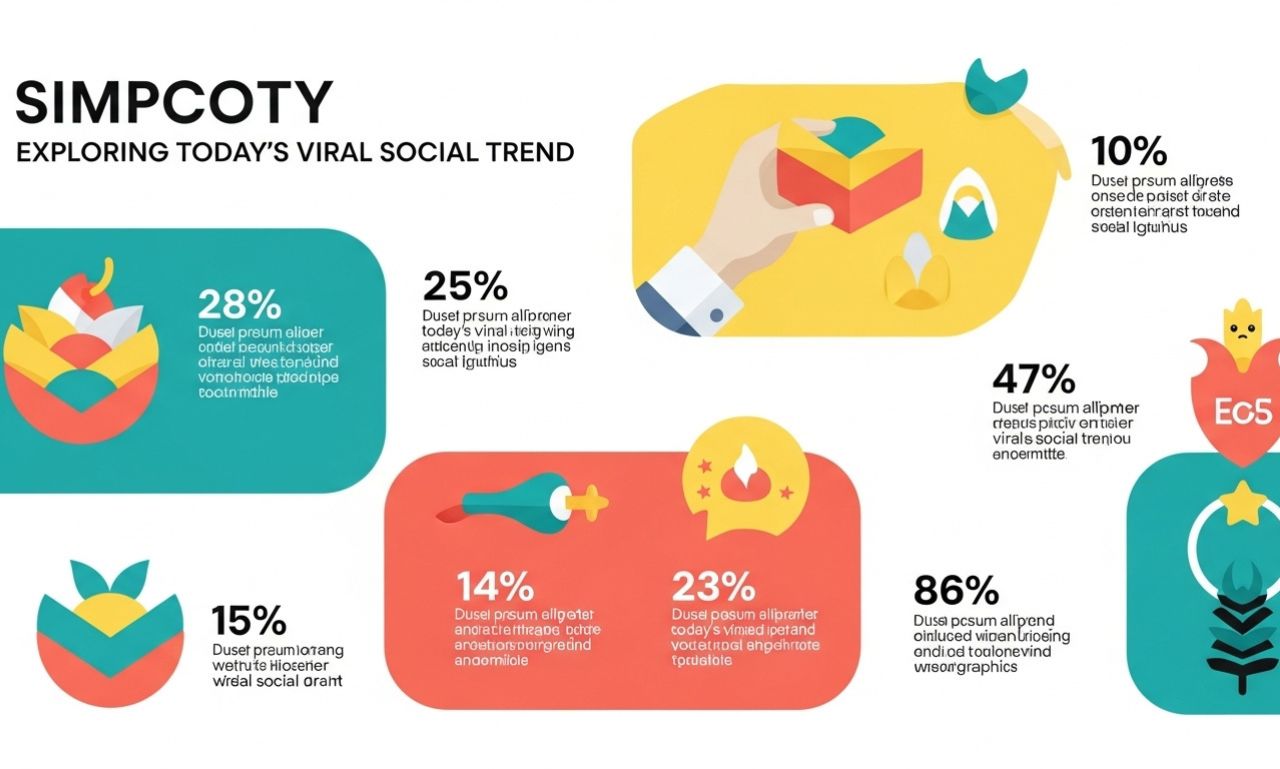When the term simpcoty pops up in online chatter, many pause and ask: what exactly is simp culture, and why is it gaining traction? In this article I’ll explore the concept of simp culture—from its origin and context to its cultural impact and meaning in our digital age. Whether you’ve seen it as a hashtag, heard it in meme culture, or stumbled across it in chat threads, this piece shows you what simp coty is all about, how it fits into larger trends like “simping”, and why it matters now.
What is simpcoty?
The term simpcoty appears to be a recent coinage blending familiar internet slang with playful exaggeration. At its core, it plays off the word “simp” (someone who goes to excessive lengths for someone else’s approval) and adds the “-coty” (maybe a pun on city / society). So simp culture refers loosely to a space, mindset or culture where people are excessively supportive, often unreciprocated, or overly eager to please someone or something.
In other words, simp culture describes not just the act of simping but the environment or “city” of simping—the place where such behaviours congregate. It’s a kind of social commentary wrapped in humour, pointing out how online fandom, devotion and admiration can escalate into something almost satirical.
The origin and spread of simpcoty
Because simpcoty is new, its precise origin is murky. It appears to emerge in online meme culture, chat groups, and social-media posts where people joke about being in “Simpcoty” when they are going to extreme lengths for someone they admire. One article mentions how “the term likely evolved from the rise of ‘simp’ memes and online slang.”
Over time, influencers, content creators and everyday users started using simpcoty ironically to describe situations like: “I live in simpcoty because I bought all her merch and attended the show.” It became shorthand for an exaggerated state of devotion.
Because it’s new, you won’t find academic papers on simp coty yet. Instead, it thrives because of social media, instant messaging, meme sharing, and the way younger generations use language to twist meanings with humour and irony.
Why simpcoty matters in modern culture
In a digital age where like-counts, sub-cribers and virtual validation matter, simpcoty captures something vital: the interplay between admiration, self-worth and online culture. Here’s why:
-
It reflects how the “simp” concept has grown. Where once “simp” might just mean a person who likes someone excessively, simpcoty suggests entire networks or mentalities built around such behaviours.
-
It highlights the blurred lines between genuine support and performative devotion. When does being a fan become simp culture?
-
It allows for self-awareness and satire. People use simpcoty not always to shame but to laugh at themselves: “Yes, I’m simping, welcome to simp culture.”
-
It gives language to a social phenomenon: instead of saying “I’m acting like a simp,” you can say “I’m in simpcoty.” That adds a layer of community and identity.
How to recognise simp culture behaviour
If you suspect someone (or you!) are participating in simp culture, here are some tell-tale signs:
-
Constantly prioritising someone else’s needs, attention or content over your own priorities, especially in online contexts.
-
Going above and beyond: buying full merch sets, attending lots of events, sharing content nonstop, reacting to every post.
-
Feeling unreciprocated: you’re giving, but getting little in return except maybe social currency.
-
Using the term “simpcoty” jokingly about your own actions: “I’ve entered simpcoty for this creator.”
-
Doing this repeatedly, not just once; building an identity around admiration rather than balanced interaction.
Recognising these traits doesn’t automatically mean something is wrong—but it’s worth reflecting on balance and motivations.
The positive side of simpcoty
While simpcoty often carries a sarcastic or cautionary tone, there are positive aspects:
-
It fosters community: People who identify with simpcoty humour often bond over shared experiences of excessive fandom and fandom-guilt.
-
It encourages self-reflection: Realising “I’m in simpcoty” can be the first step to rethinking one’s online habits.
-
It can be fun: Embracing the absurdity of simpcoty can lead to laughter, ironic memes and lighter engagement.
-
It articulates modern digital emotional dynamics: We all chase validation, and simpcoty gives us a word to talk about it.
The riskier side of simpcoty
However, like anything in social media-fandom culture, simp culture has downsides:
-
Emotional imbalance: If you give too much attention and expectation to someone or something, you may neglect your own needs.
-
Financial/spending risk: Buying merchandise, event tickets, exclusive access in the name of “simpcoty” can add up.
-
Reduced self-esteem: Feeling you’re always “in simpcoty” because you seek approval can erode self-worth.
-
Social media addiction: The chase for likes, comments and reciprocation may deepen.
In short, while simpcoty can be humorous, if left unchecked it may mirror unhealthy patterns of behaviour.
How to engage with simpcoty wisely
Here are some practical tips to stay balanced while participating in fandom or simpcoty spaces:
-
Set boundaries: Decide in advance how much time/money you will devote to a creator or fandom.
-
Ask yourself why: Are you doing this for fun, or for attention, quality of life, or escape?
-
Diversify: Don’t put all emotional investment into one person/content creator.
-
Reflect: If you catch yourself using “I’m in simpcoty” often and feeling down, pause and reset.
-
Enjoy the fun but keep perspective: It’s okay to laugh at yourself, but also okay to step back.
simpcoty vs. simp: what’s the difference?
Though closely related, simp culture and simp are not identical:
-
Simp: The person engaging in excessive admiration/support.
-
Simpcoty: The environment, mindset or collective pattern. It’s the broader social space where simp behaviours congregate.
Thinking this way, you might be a simp in simpcoty. The subtle shift—from the individual to the culture—matters because it shows how these behaviours are networked, not just isolated.
Origins of simpcoty slang and meme usage
The evolution of internet slang often follows this path: someone uses a word in one context, it catches on, then gets modified and repurposed. With simpcoty:
-
“Simp” became mainstream around 2020-2022 as a term in meme culture.
-
People began joking about cities, states or spaces of simping (“Simp city”)—that led to a punny shift.
-
“Simpcoty” emerged as a fresh label: a satirical place where simping happens.
-
Memes, posts, and hashtags adopted the term, embedding it in fandom and online culture.
The result: simpcoty is part of the ongoing evolution of slang, rooted in humour, irony, and collective self-awareness.
The cultural impact
Beyond mere jokes, simpcoty reflects broader trends:
-
The rise of parasocial relationships: When viewers/fans feel a connection to someone who doesn’t know them personally.
-
The increasing stakes of digital influence: Creators, streamers, personalities receive high levels of support—sometimes beyond entertainment.
-
A shift in youth identity: Language like simpcoty allows younger people to describe and own behaviours that earlier generations didn’t.
-
Social media as emotional playground: Simpcoty shows how feelings, validation and community are intertwined online.
In short, simpcoty isn’t trivial—it signals changes in how people relate, admire and invest in online culture.
Real-world examples
Here are some realistic scenarios of simp culture:
-
A fan attends every event, buys every limited-edition drop, and posts about it daily. They joke: “Welcome to my simp culture.”
-
Someone continually comments on a creator’s every post just to stay noticed. Others say: “He lives in simpcoty now.”
-
A meme page creates graphics titled “Simpcoty Tours: Coming soon” to mock how far fandom can go.
These examples show how simpcoty is part comedy, part commentary—and part everyday behaviour.
Why some resist the term simpcoty
Not everyone loves the label. Some push back because:
-
It can shame genuine admiration or fandom.
-
It might trivialise healthy support by lumping it with excess.
-
People may feel mocked if labelled as part of simp culture.
So while simpcoty is playful, it’s important to use it with awareness and avoid reducing supporters to caricatures.
How simpcoty will evolve
Given how fast culture moves, simpcoty might evolve in several ways:
-
New suffixes or variations might emerge (“simpcotopia”, “simpcosphere”).
-
It might be incorporated into marketing or branding as creators lean into fandom jokes.
-
Academic or sociological studies might pick it up as a concept of devotion in digital culture.
-
It could become a recognisable part of media discourse about fandom, influence and social behaviour.
The future of simp culture may be surprising—but given its roots in slang and community, it has room to grow.
My personal take on simpcoty
From my observations, I see simp culture as a mirror. It shows both the fun side of fandom and the more serious side of emotional investment online. I’ve seen people launch into simp culture mode—buying, posting, reacting—then later reflect and decide to pull back. That shift is healthy.
By acknowledging that one is “in simpcoty”, there’s an element of self-control: you’re aware of your behaviour. So I view simpcoty not simply as a label, but as a checkpoint: “Am I participating in this culture or am I being driven by it?”
Tips to avoid getting stuck in simpcoty
Here are actionable steps to stay on track:
-
Limit budget: Set an amount you’re comfortable spending on fandom each year.
-
Track time: Notice how many hours you devote to one creator/fandom per week.
-
Reflect monthly: Ask yourself if you’re still enjoying it or burnt out.
-
Expand interests: Balance your fandom with other hobbies, communities, or offline activities.
-
Celebrate without over-investing: It’s fine to love and support, but keep your identity broad.
Why simpcoty is more than just a meme
Many might dismiss simpcoty as just another internet meme. But when you peel back the layers, you see it addresses real issues: validation, devotion, social identity, online behaviour. It gives language to experiences many of us face—even if we haven’t labelled them.
So simpcoty becomes a tool—not just comedic, but explanatory. It helps us talk about the line between healthy support and possibly unhealthy investment. And that makes it relevant far beyond the joke.
How educators or parents can discuss simpcoty
If you’re an educator or parent curious about simp culture, here are some conversation starters:
-
Ask: “Have you seen or used the word simp culture? What do you think it means?”
-
Discuss healthy fandom: What is support? What is over-investing?
-
Use real examples: “If someone buys every ticket, every drop, every event for one creator—where does simpcoty begin?”
-
Encourage reflection: When does admiration cross into self-neglect?
-
Emphasise balance: It’s great to support, but also great to maintain your own agency and life.
The role of community and anonymity
Part of what makes simp culture appealing is the community dimension. People on Reddit or forums joking about being in simp culture often feel understood—they’re not alone.
Anonymous or semi-anonymous online spaces allow the term to spread, be mocked, reclaimed, and reshaped. The anonymity also means people feel safer admitting “I went too far” and using simp-coty as a humorous label rather than shame.
Mental health
Because simp culture touches the edges of devotion and self-sacrifice, there are mental-health implications:
-
Burnout: If one lives in simp-coty, constant engagement can lead to fatigue.
-
Self-esteem issues: If your identity depends on someone else’s content/response, you risk instability.
-
Social isolation: Prioritising online support over real-life relationships can reduce face-to-face connection.
However, recognising simpcoty early can help mitigate risk. Awareness, boundaries, and moderation are key.
Conclusion
In the end, simpcoty is more than a trending term—it’s a mirror reflecting the digital era’s unique blend of admiration, humour, and identity. It captures how deeply connected people have become to online creators, fandoms, and communities, sometimes to the point of playful exaggeration. By understanding simp culture, we see both the joy and the pitfalls of modern devotion: the laughter it sparks and the lessons it teaches about balance, boundaries, and self-awareness.

